Non-residents who haven’t had the joy of visiting the state often have very narrow perceptions of Arizona, often starting with the Grand Canyon and Saguaros. “Desert” and “Phoenix” also rank high. Birders from around the world are aware that there are many “Mexican” species that cross the border, making this a must-see state for serious listers. Those who know about copper extraction may simply think that Arizona is just a state of mined. And then there are those who can only think about “the Wall” to keep out “illegal aliens,” as if we were under attack from outer space.
While I am not encouraging folks to pack up and move to the state, I have to say that Arizona is one of the most diverse and beautiful states in the nation. Living in Prescott, I am within an hour or two of low deserts (Sonoran and Mojave) all the way up to tundra on the San Francisco Peaks near Flagstaff. It’s a naturalist’s paradise.
Summer brings the monsoon rains to many parts of the state, but it tends to be most predictable and productive for wildflowers in the White Mountains close to the New Mexico border. Recently Joanne and I spent four days in that amazing country, and I want to share just a few images to inform those who may not be aware that this little outlier of the Rocky Mountains is truly a summer paradise.
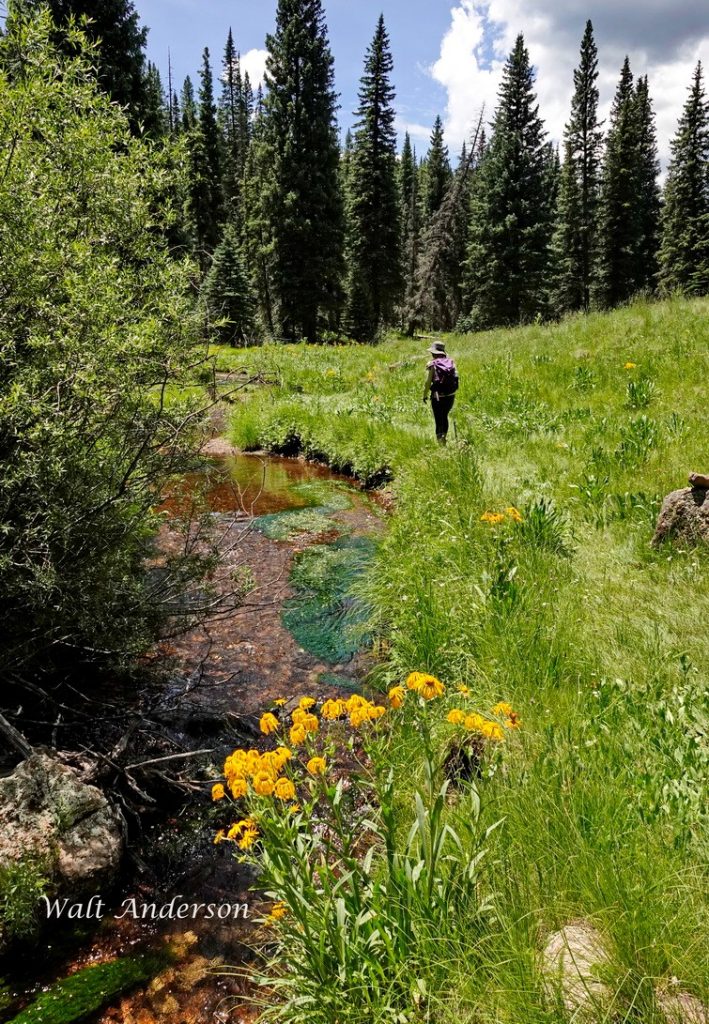
The Little Colorado River and many tributaries begin in the higher elevations of the White Mountains. We stayed in the small town of Greer at 8250’ and spent most of our time between that elevation and 9400’. Great way to escape the summer heat! Yup—those are spruces, not Saguaros.
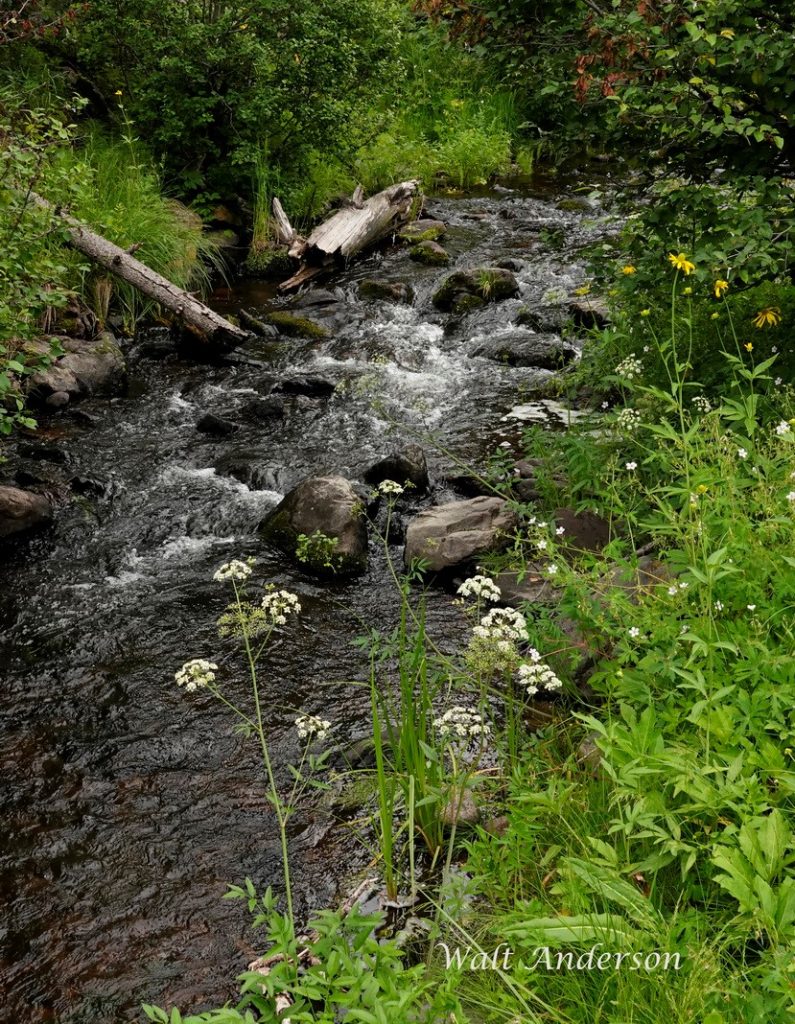
The West Fork of the Little Colorado River. Headwaters tributaries all converge at some point, so the higher reaches are various forks: West, North, Middle, East, South. The only thing I couldn’t find on the map was the Dinner Fork.
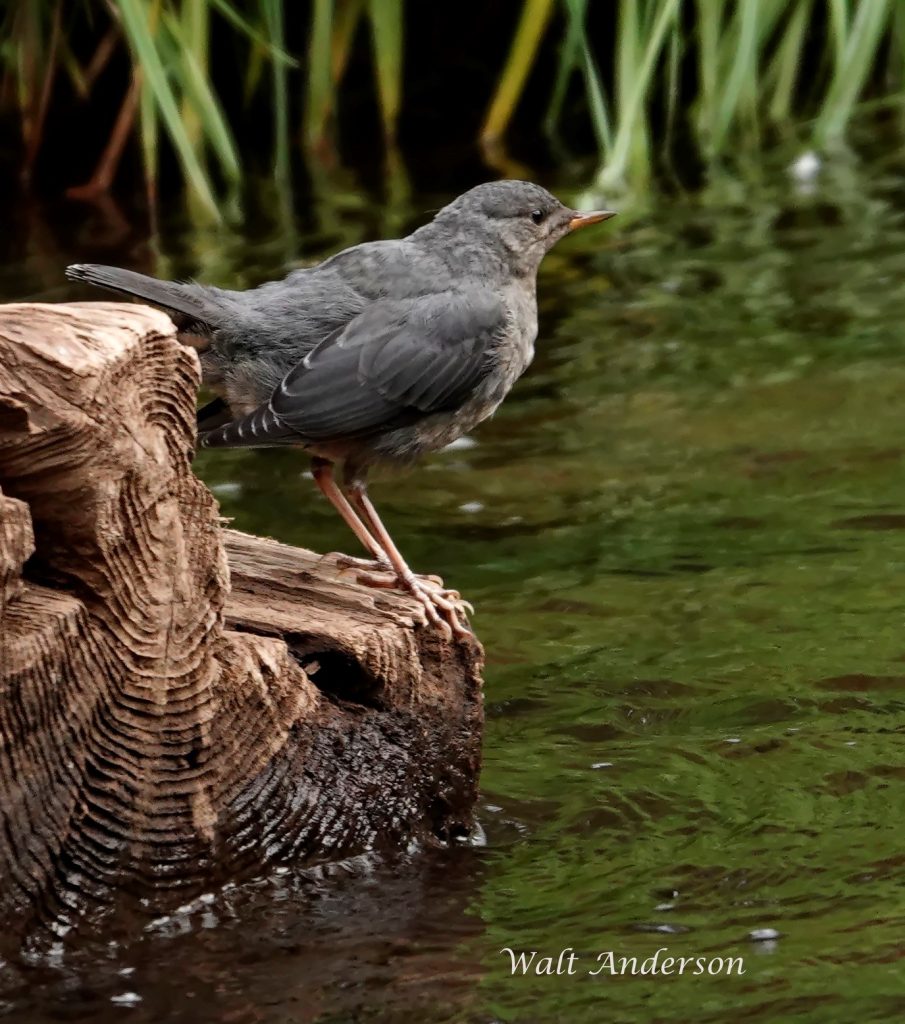
Those mountain streams are perfect breeding habitat for the America Dipper, that delightful aquatic songbird—a far cry from the state bird, the Cactus Wren.
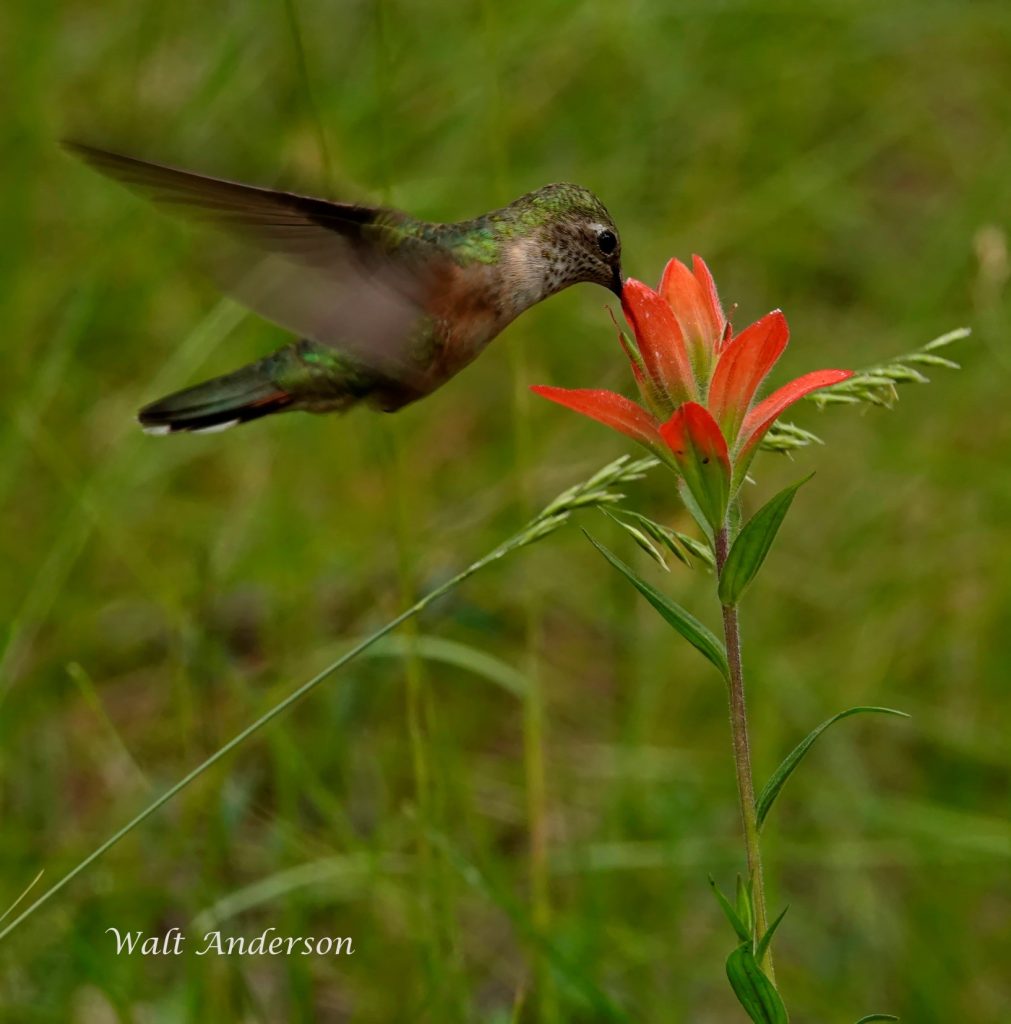
The summer wildflowers support good populations of Broad-tailed Hummingbirds. Arizona has among the highest levels of hummingbird diversity within the US.

Broad-tails have to watch their backs when the more aggressive migrant Rufous Hummingbirds come through the state. This feisty little Rufous was harassing the summer-resident Broad-tails.
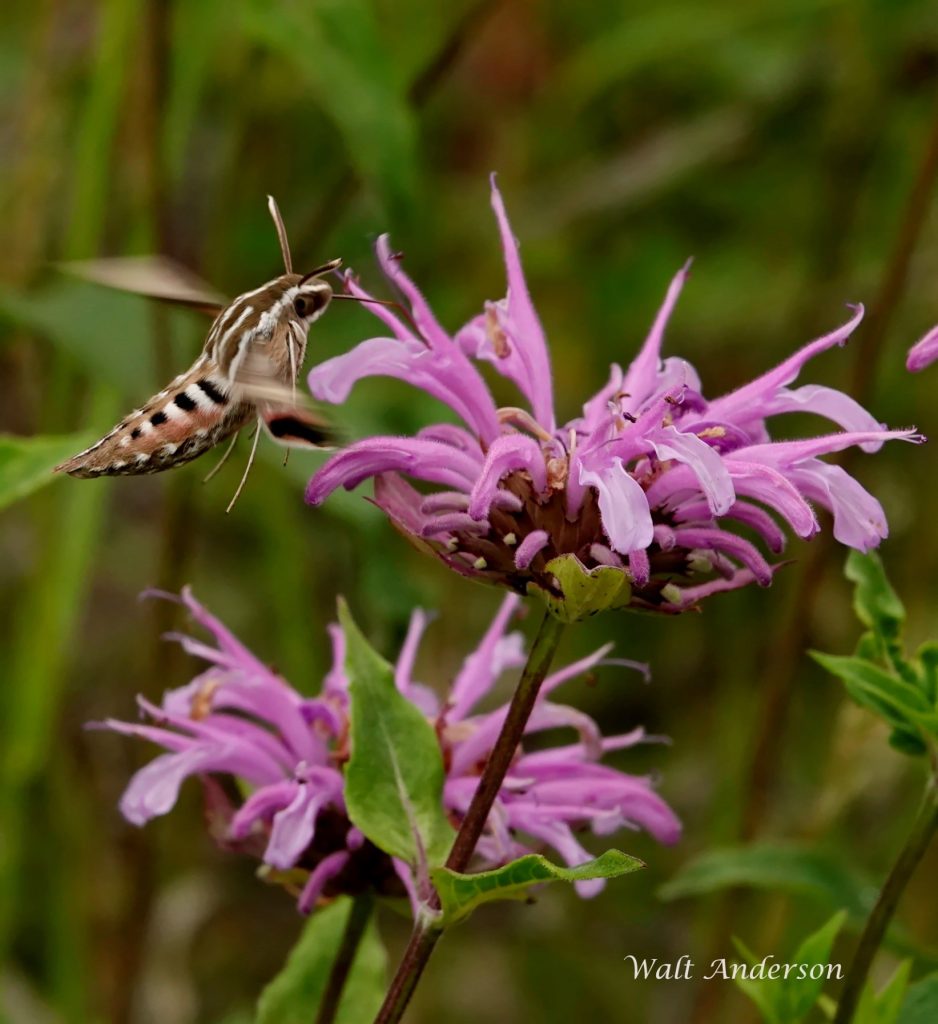
The abundance of wildflowers attracts a diverse suite of pollinators, including the White-lined Sphinx, which hovers like a hummingbird. The Wild Bergamot or Beebalm is a choice target.

Hunt’s Bumblebee is a lovely pollinator, here involved with a Western Sneezeweed.
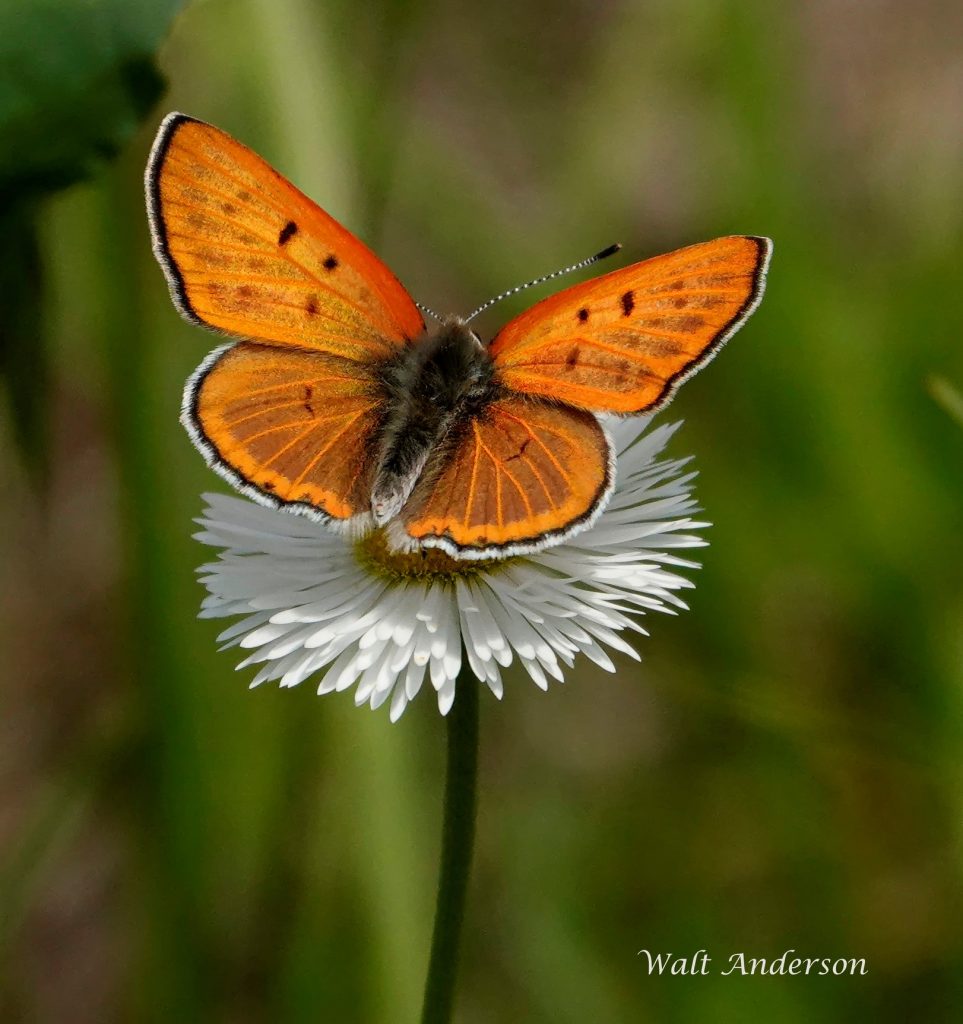
Ferris’s Copper is an endangered butterfly found only in the White Mountains. Formerly it was included within the Ruddy Copper species, but this population has been isolated for quite some time and has earned its own special epithet. Because of its limited range, it certainly is vulnerable to the effects of a changing climate. This one is attending a lovely Tower Daisy.
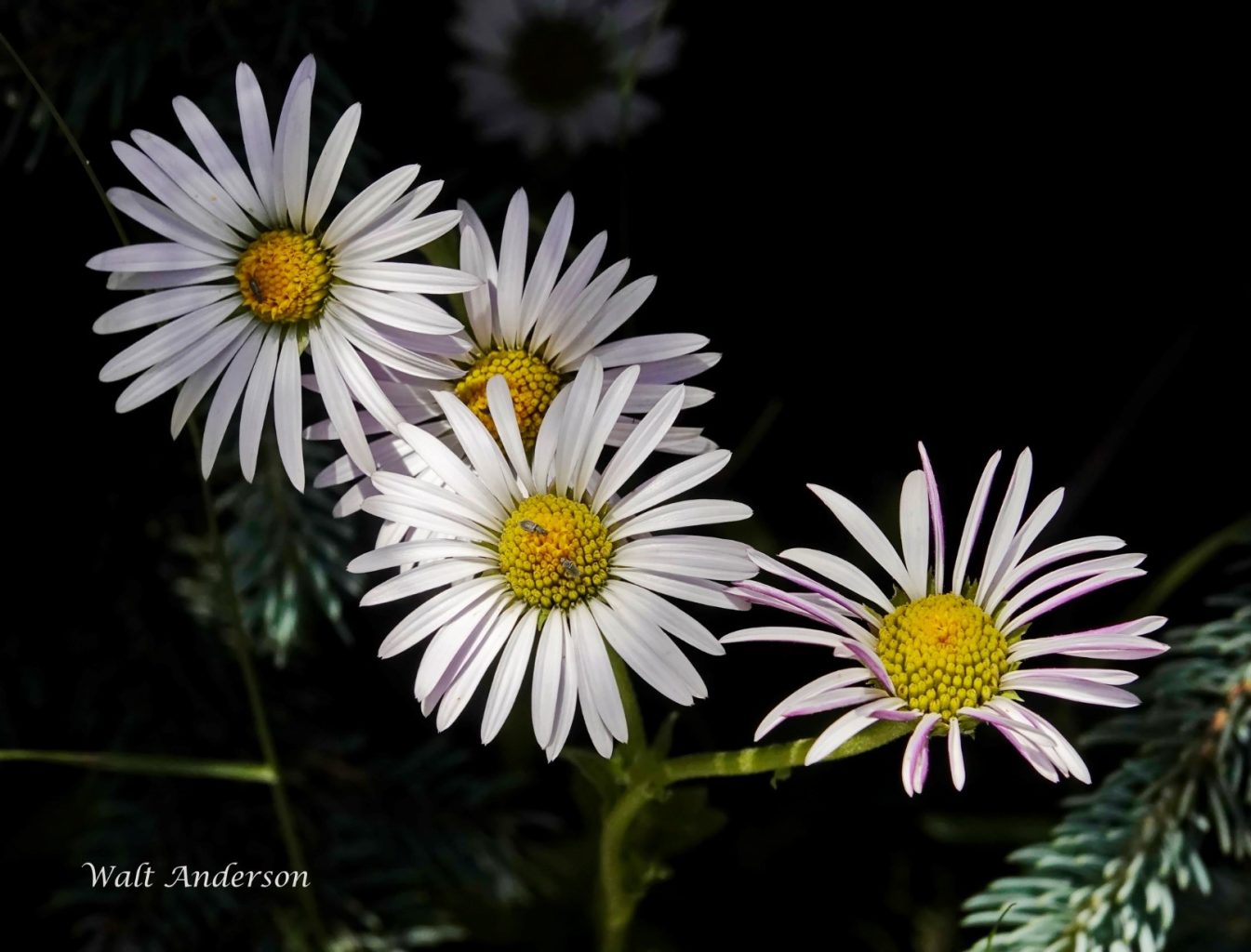
The Tower Daisy, Townsendia formosa, is a long-stemmed cousin of the lower-elevation Easter Daisy, T. exscapa, which is also called Stemless Daisy. I loved how these flowers arose out of the shadows of a spruce to greet the sun.
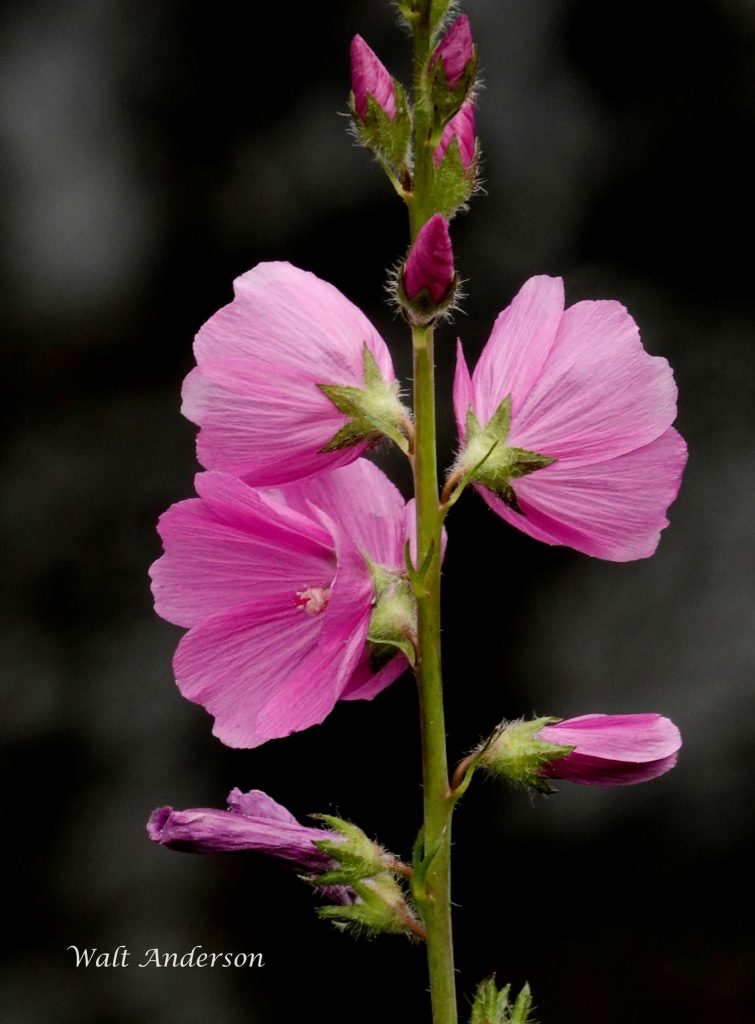
The New Mexican Checkermallow, Sidalcea neomexicana, is another of the blossoms that greeted us in the mountain meadows along the rivers. It’s a mellow mallow.

Hiking during the monsoons requires awareness that thunderstorms can arise quickly at any time. We hustled back from one of our mountain hikes just in time as rain began to pelt the forest. We drove toward Big Lake, where we could see the storm we had just left behind.
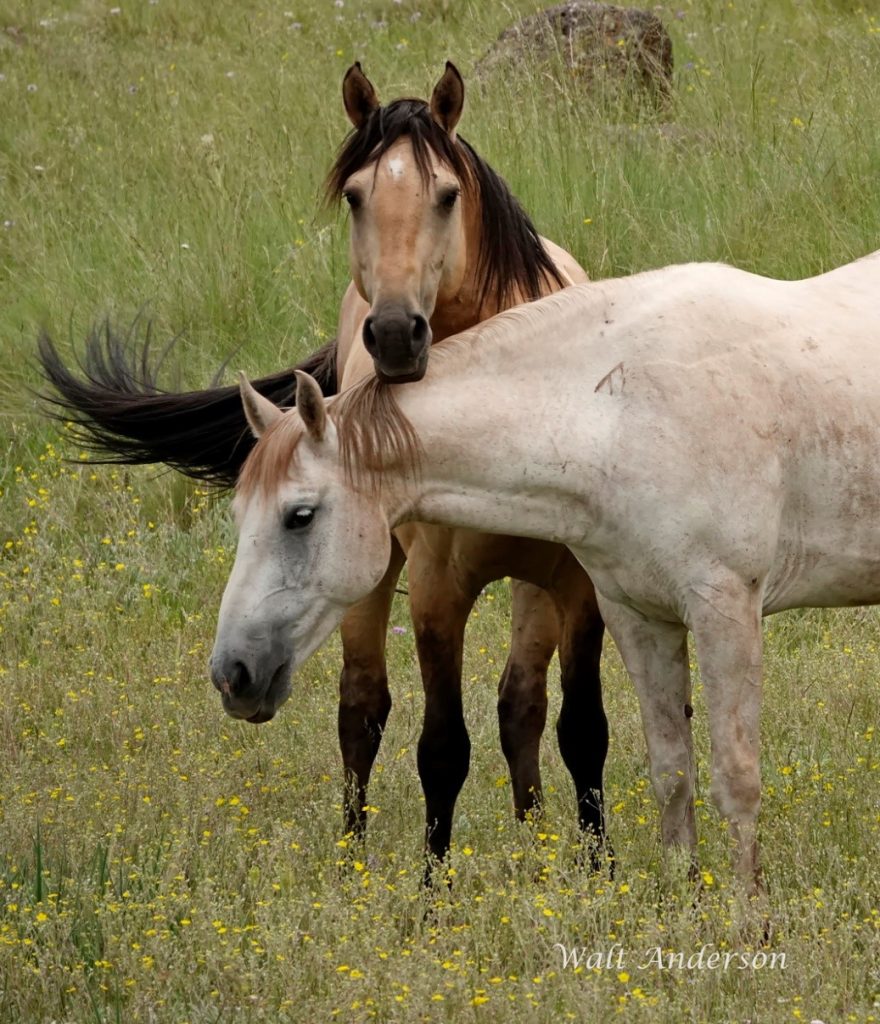
Those expansive meadows of flowers hosted a small herd of horses.
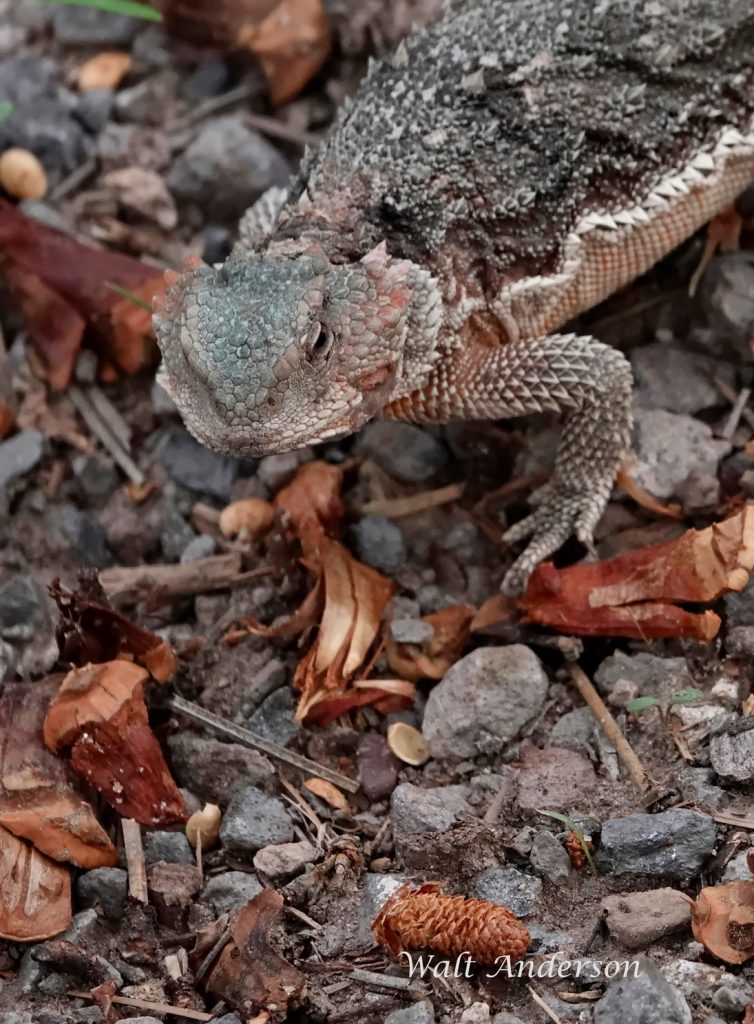
We saw plenty of birds and mammals but just two species of reptiles. One was this well-camouflaged Short-horned Lizard.
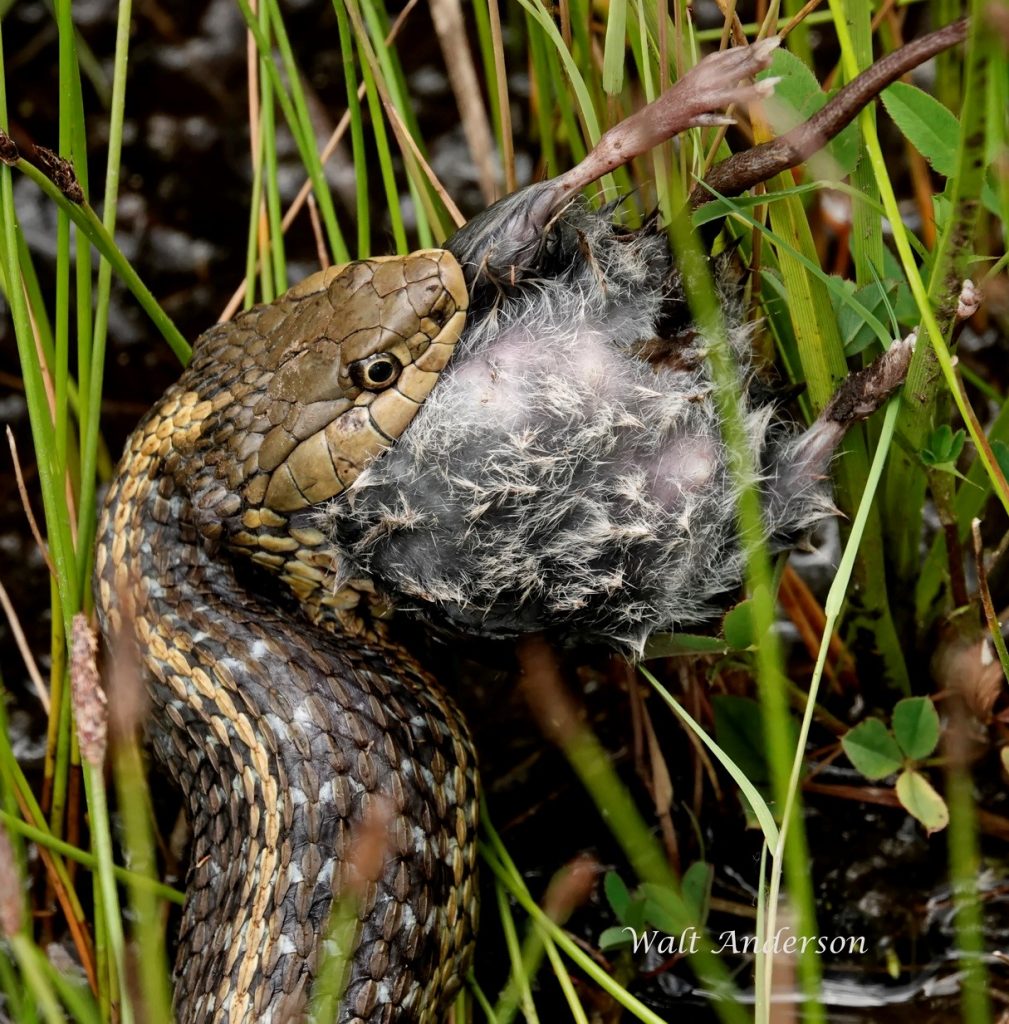
The other was a Wandering Garter Snake. This one is enjoying a big meal of wet mouse.
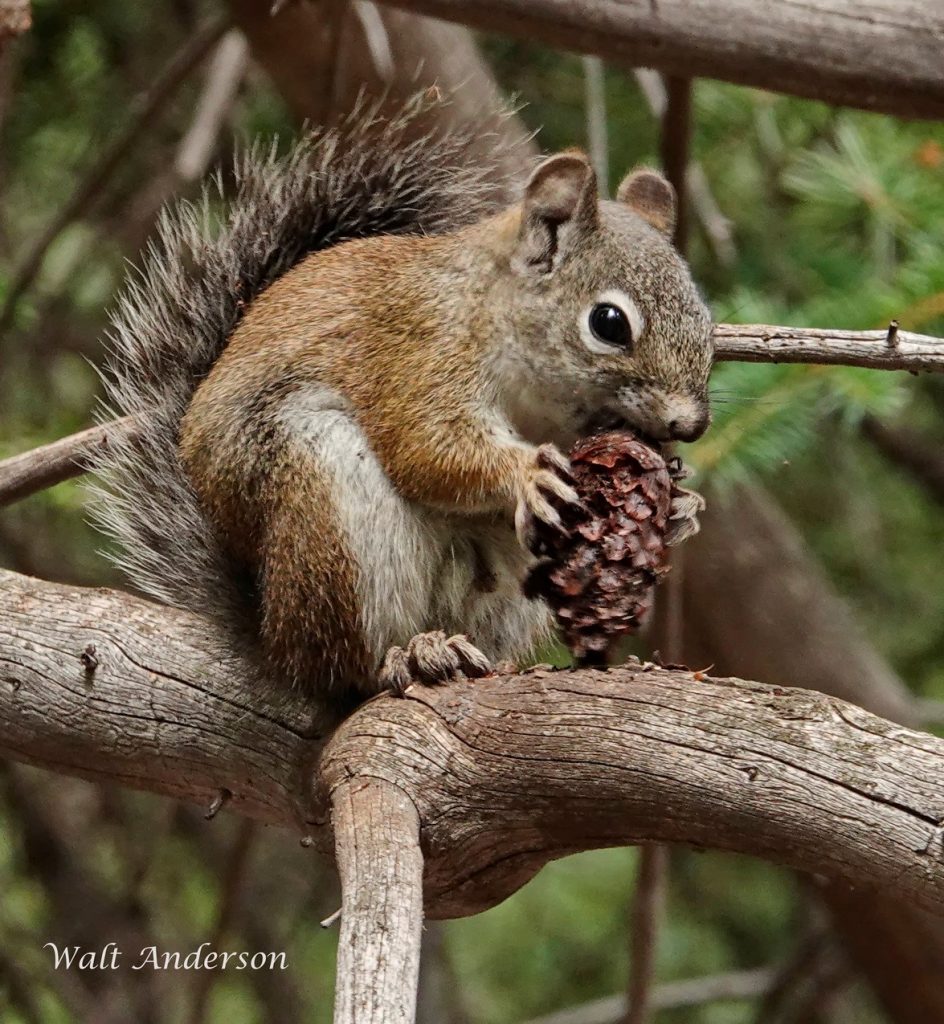
Red Squirrels were common in the spruce forests. It was impressive how quickly they can work through a cone.

All spruced up and ready to go!
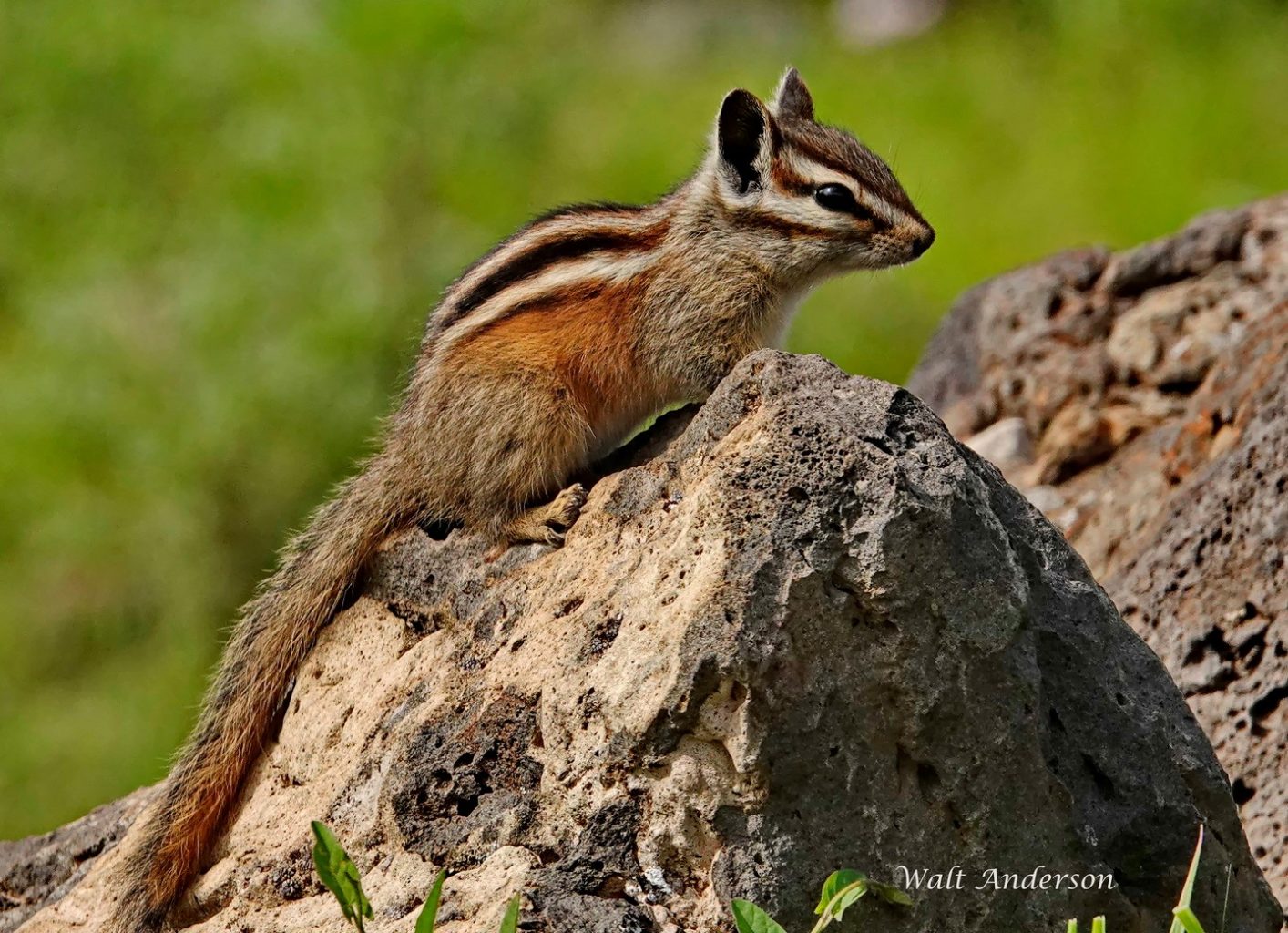
The Gray-collared Chipmunk has much more dramatic stripes than the widespread Cliff Chipmunk in Arizona. Chipmunks can easily be told from the larger Golden-mantled Ground Squirrels by their facial stripes.
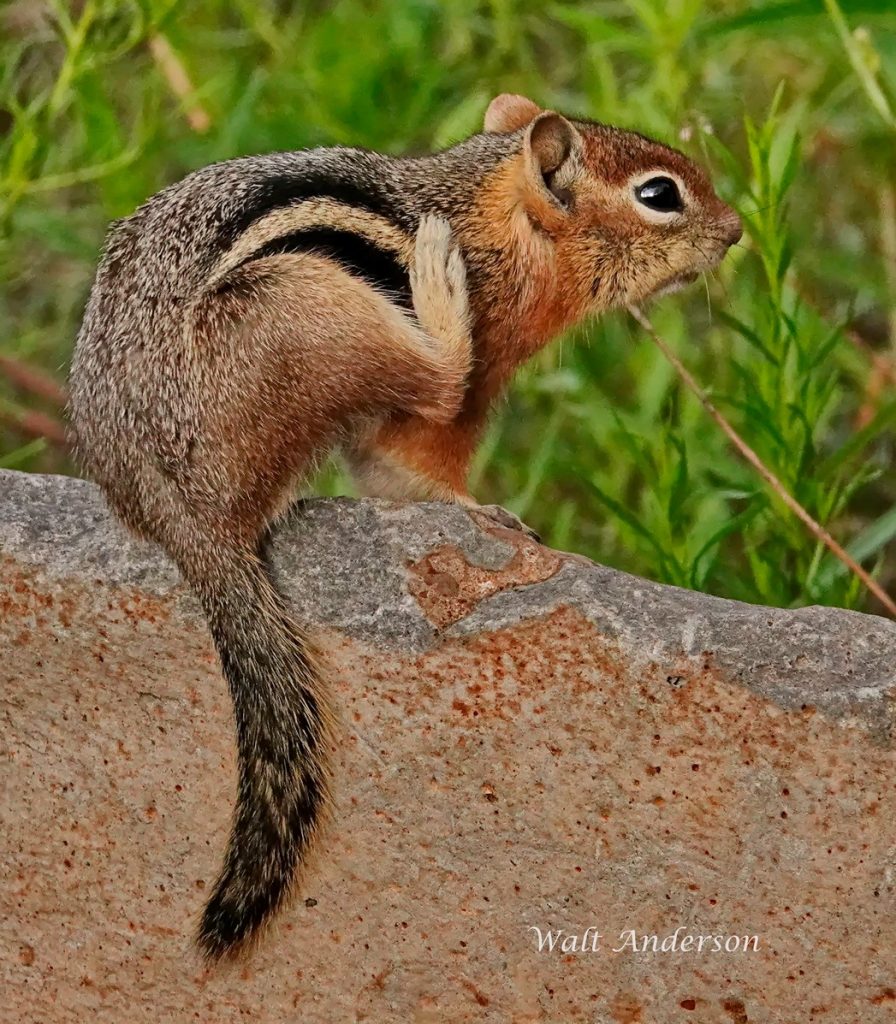
The Golden-mantled Ground Squirrel is certainly one of the most beautiful of the ground squirrels. Note the absence of facial stripes. They are also more robust than the little chippies.
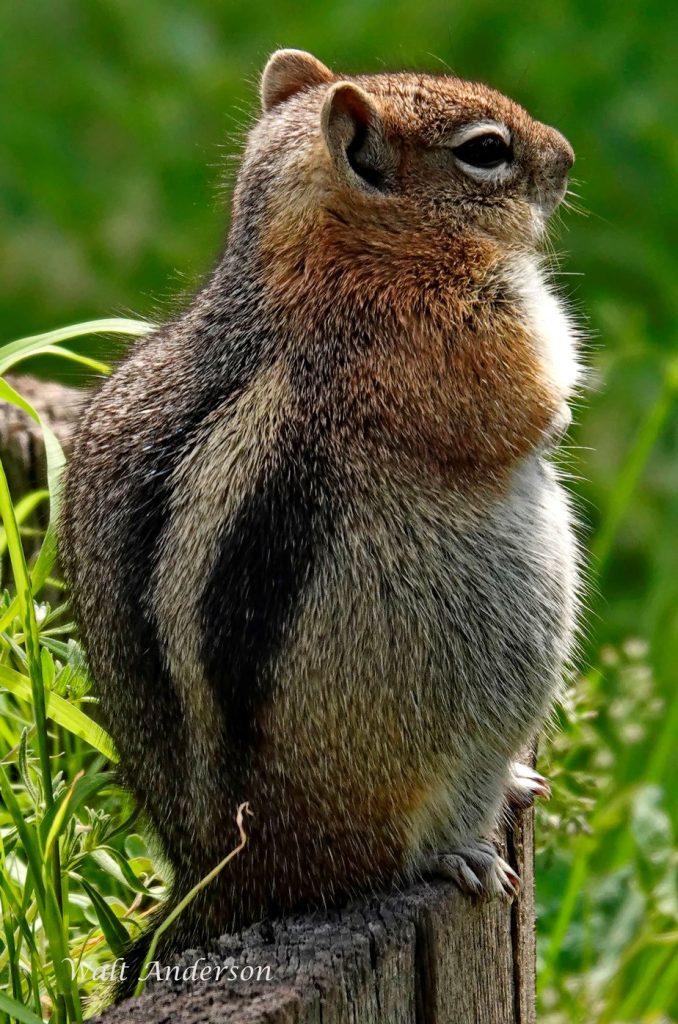
Well, this one has taken “robustness” to an extreme!

Summer in the White Mountains is a time of plenty for most critters. The landscape also hosts larger mammals like deer, elk, black bears (we saw one on our way home along the Mogollon Rim), and even repatriated wolves. Three summers ago, we were treated to a sunset chorus of wolves in this area, one of the most thrilling sounds I can imagine. Winter is harsh, however, though ski areas are popular among the human residents. The White Mountains come by their name thanks to their winter snows—certainly not the “just deserts” that many non-Arizonans imagine! But please don’t sell Arizona as the land of milk and honey, as we like it the way it is. And lack of water is a constant reminder that there are real physical limits on human growth. With climate change exacerbating the dearth of water, we should listen to what Mother Nature is telling us. Enough already!
